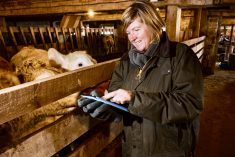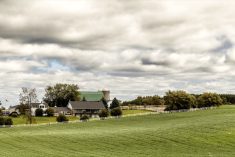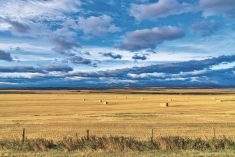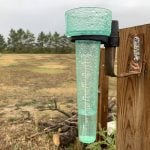Warren Buffet once said, “Only when the tide goes out do you discover who’s been swimming naked.”
Well, the tide is going out in primary producer agriculture. Who will be left with clothes on?
Is the shifting tide due to the highest cost of production ever? The changing policy discussions? The geopolitical factors that come with trade wars? Or just the fact that weather events are becoming more common?
Read Also

What to consider when setting up farm-related business ventures
Things to consider before launching a farm-adjacent side business.
Whatever it is, there’s definitely a shift.
Growing up I never realized how much agriculture was trailing other industries in terms of financial acumen. We could once obtain loans with looseleaf net worth statements and personal tax returns. The words “accrual,” “debt service” or “working capital” were not words frequently thrown around, much less understood by most famers.
In my early years agriculture was not profitable, and land was traded for property taxes.
How things have changed.
As 2025 progresses, indicators of change have appeared. Banks are tightening up on reporting and covenants. Farms are starting to see cracks in their financial foundations. Even agricultural educational institutions are taking notice.
A colleague of mine once commented that he had to be careful when discussing financial acumen with farmers during his presentations as it was a “touchy” subject. Well, guess what? Touchy doesn’t pay the bills.
As farmers move into a new reality of financial requirements, let’s break down the non-negotiables when it comes to running your business.
Accrual financial statements
For the first time, this spring I had a conversation with a lender who refused a restructure due to lack of historical accrual reporting.
It was almost a breath of fresh air.
For years the industry has been trying to push producers towards understanding and using accrual reporting over cash. Accrual allows the farm to identify if it’s profitable, not just if there’s money in the bank to pay the next bill. This is not to say that cash doesn’t have a place in key performance indicators, it just cannot be the only conversation.
Our partners to the south have been trying to push this standard for 30 years. Ever since the 1980s agriculture crisis, U.S. regulators and standards boards made it a key objective. But they have made little headway.
I would like to think that Canada is closer but let’s say its efforts are the “best of the worst.” Over half of the primary producer industry has still not adopted accrual reporting and does not know if they are profitable year over year.
Call it the Holy Grail, but a true business requires accrual information throughout the year. Many of the farms we consult for now have internal controllers, monthly accrual reporting and know exactly where they stand in terms of profitability.
This is how you can make decisions with no emotion, just data.
Budgets and projections
Budgeting is more of a spectrum than a destination.
There are many factors that need to be considered when preparing a true projection that most fail to execute. The key areas of focus should be the following:
- Cost of production: The need to identify a farm’s true cost of production has never been greater. To move a step further you need to identify both an accrual and a cash number to appropriately market your product. One requires amortization (yes, this is a true cost as you are losing equity in your machines at a rapid pace per hour); the other needs debt payments as they are a cash drain and, depending on your leverage model, may be material. Overall, you need to identify a marketing plan that shows a sustainable return per bushel and per acre.
- Monthly burn rate: Without a monthly cash flow (preferably planned over an eighteen-month period) your ability to market falls only on price. For most farms, cash flow, logistics and many other factors go into when and how you market your products — even more so on livestock operations where you don’t have steady cash flow throughout the year. Knowing your monthly cash out-flows will help you make longer-term decisions.
- Capital planning: The time to decide on equipment and infrastructure is not when the salesperson sits down for a coffee. Most progressive farms create capital plans years in advance and stick to them. In the past, operations bought equipment in good years and then held tight when times got tough. This doesn’t allow for any future strategy or plan; it is purely emotional buying. Know what you can afford, when machinery requires replacement and how this affects your profitability and banking.
Key performance indicators
It still amazes me how many producers have never read a commitment letter from their lenders.
On many farms, financial institutions are the only thing between them affording to put a crop in and calling the auctioneers. Agriculture is an equity rich-cash poor business and, as such, the ability to understand your key banking and internal ratios is more important than ever.
Following are the three indicators every operator should know at any point in their day:
- Working capital: How much cash you have available to cover future costs. This could be working capital cash in a bank account or grain in the bin that can be easily converted to cash. Working capital is calculated by your current short-term assets less your obligations due over the next year. This ratio determines how easily you can make sales and procurement decisions and whether you can take the family out for dinner on a Sunday night.
- Debt service: The indicator of whether you can make enough cash to pay your debt. For non-farm individuals this would be your employment income compared to your mortgage and car loans. For farms, this is whether over a three-to-five-year period the farm creates enough cash to cover the current debt obligations. This determines whether your banker will give you more money or shut the tap off.
- Debt to tangible net worth: Are your assets larger than the debt you maintain? This is the least important indicator with your lenders, but often a covenant, nonetheless. This indicates whether you have left enough of your personal wealth in the business in comparison to the bank’s risk. This often only becomes a broader conversation if land values decline or if you are slowly taking large amounts of cash out to buy personal assets.
Every time agriculture enters a down cycle the industry pushes primary producers into positive change.
It is an interesting trend as it follows the concept that good times create soft people, and hard times create hard people.
Whether 2025 continues to be the year where we see the industry force change, only time will tell. But as an individual who speaks with a significant number of farms every year, I sometimes hope for short-term pain to force a long-term change.















